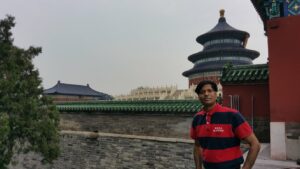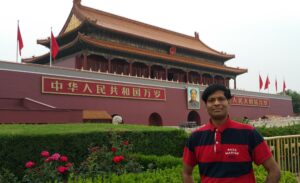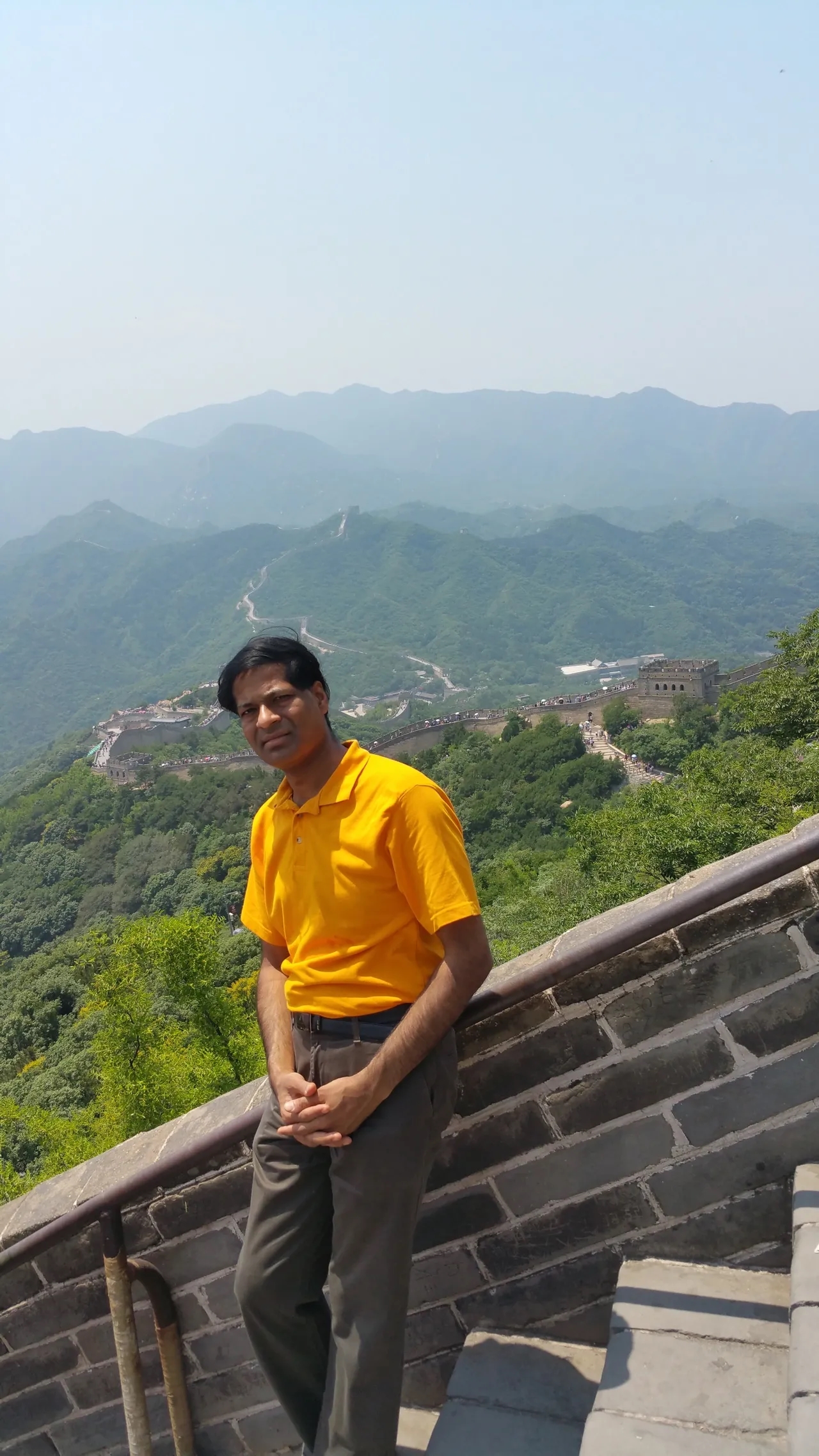
The Great Wall of China (Chinese: 萬里長城; pinyin: Wànlǐ Chángchéng) is the collective name of a series of fortification systems generally built across the historical northern borders of China to protect and consolidate territories of Chinese states and empires against various nomadic groups of the steppe and their polities. This collection of fortifications known as the Great Wall of China.The Great Wall of China, one of the greatest wonders of the world, was listed as a World Heritage by UNESCO in 1987. Just like a gigantic dragon, it winds up and down across deserts, grasslands, mountains and plateaus, stretching approximately 21196 kilometers from east to west of China with a history of about 2700 years. It took more than 2,500 years to finish the construction of the Great Wall. The wall was not built in a single time period, but combined effort of many states and dynasties in history

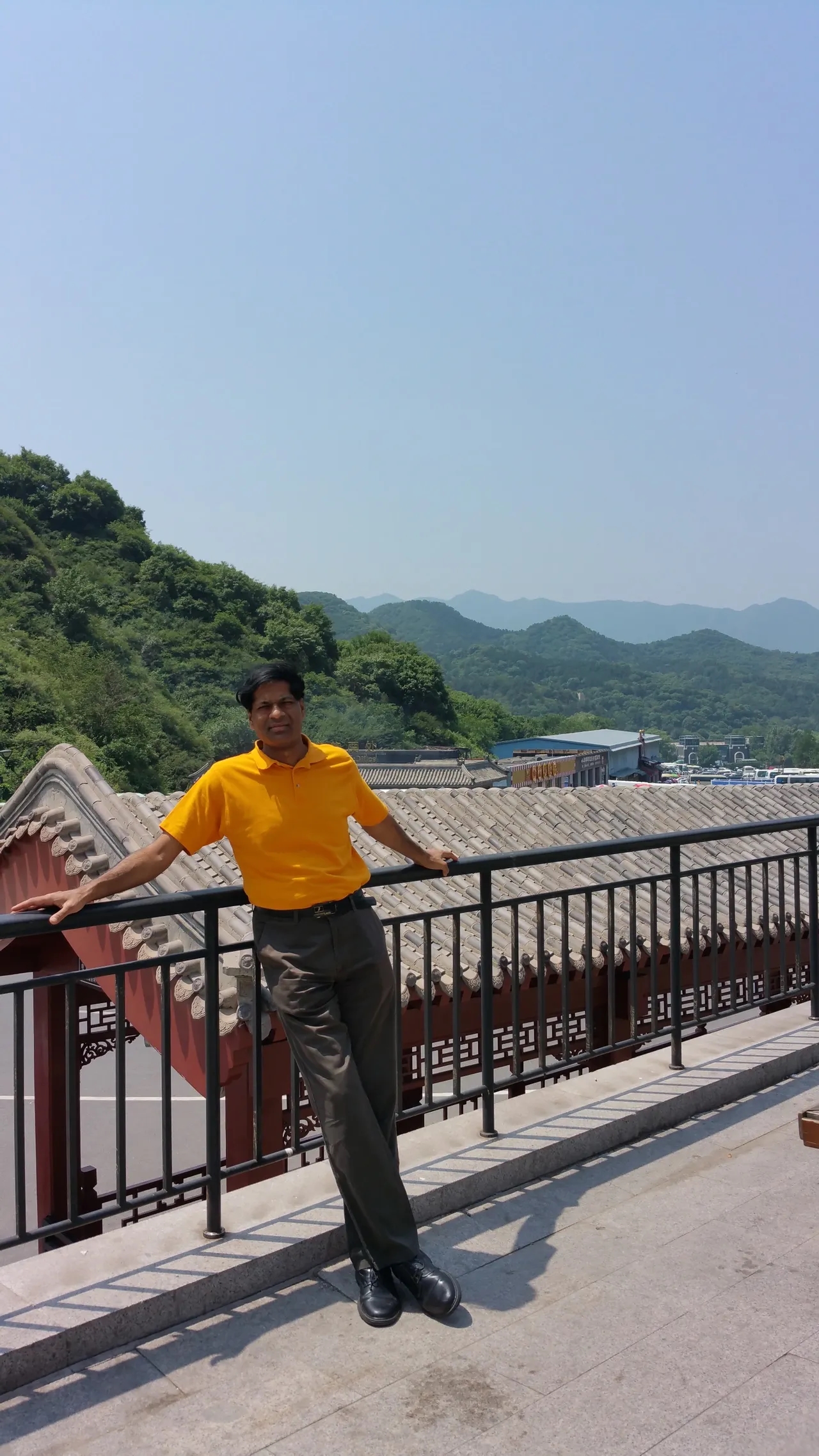
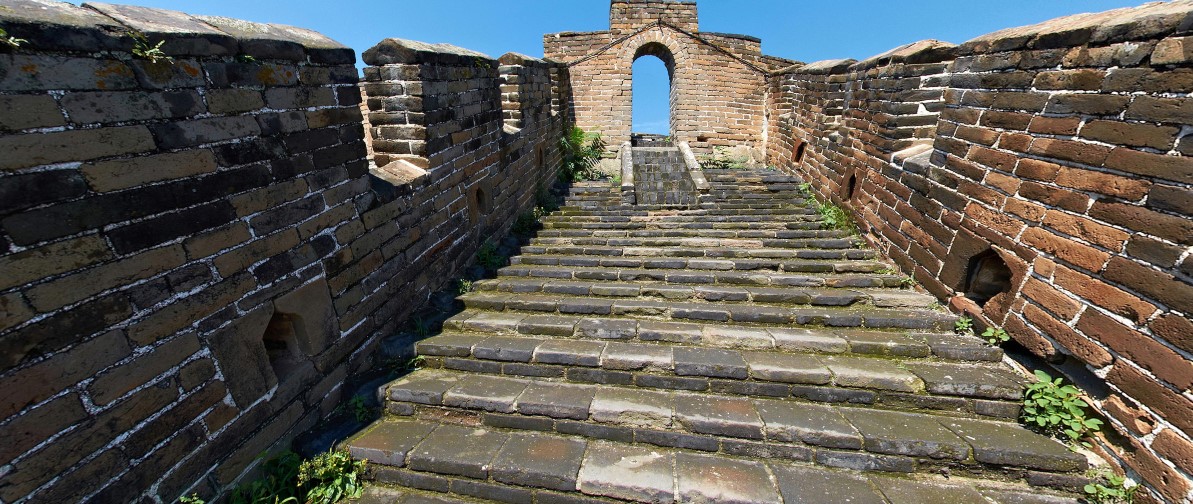



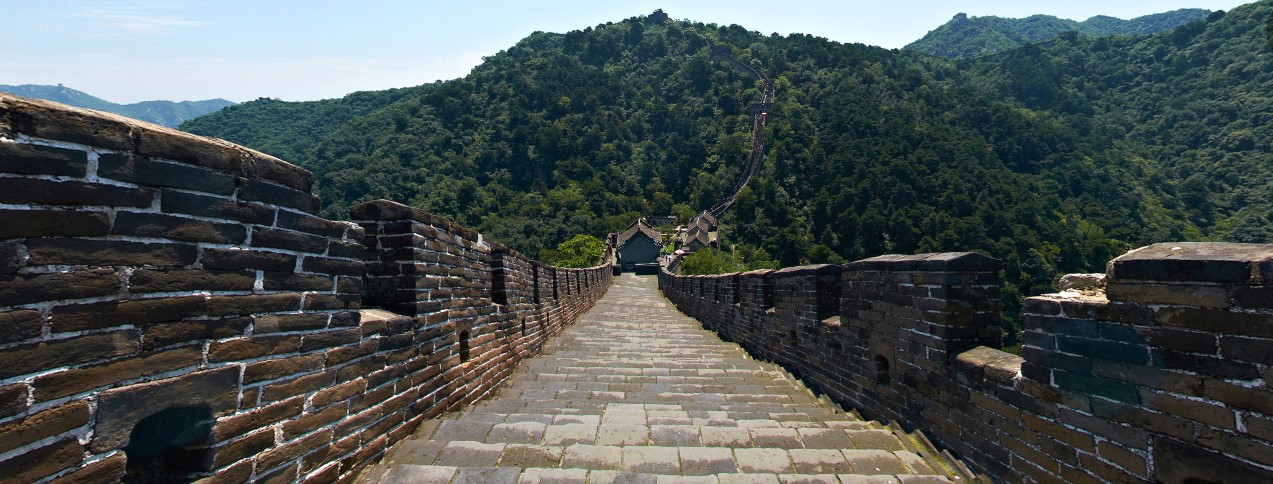
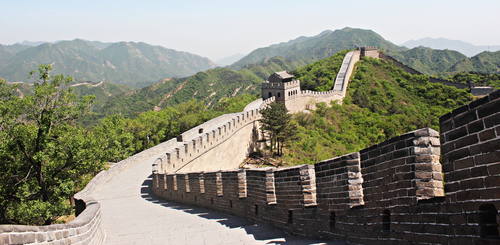
WHAT IS THE GREAT WALL OF CHINA ?
IS IT JUST A WALL ? DESCRIBE
NO.THE GREAT WALL OF CHINA IS NOT JUST A WALL
IT IS A TOTAL SYSTEM
- It is named a ‘Wall’, but actually it is not only a simple ‘Wall’
- The structure is not a single long ‘wall’ but a collection of ‘walls’ !
- In fact, there is not one wall, but many walls, in the plural
- It is a defensive network consisting of many walls and forts built in different historical periods with
- some segments scattering while
- some running parallel
- In some places, the wall doubles or even triples itself
Historical facts show that it was a comprehensive fortification, consisting of
- Overlapping walls and trenches for blocking enemies
- Watchtowers and beacon towers for signals and communication
- Fortresses for head-on battles and
- Barracks to accommodate soldiers
During the Ming Dynasty, a well-designed array of fortifications such as
- The Three Inner Passes of Daoma, Zijing, and Juyong, and
- The Three Outer Passes of Pianguan, Ningwu, and Yanmen, formed a solid defense for the capital city of Beijing
- It is a truly multi-purpose defensive system as well as an economic, transportation & border control passage corridor as well !
- The Great Wall of China is the collective name of a series of fortification systems generally built across the historical northern borders of China to protect and consolidate territories of Chinese states and empires against various nomadic groups of the steppe and their polities
- So territorial defence was the main aim of constructing the Great Wall
- It is therefore a construction wonder built (some stretches re- built), maintained, preserved, extended & linked over thousands of years by various rulers & dynasties in China !
Furthermore, the defensive characteristics of the Great Wall were enhanced by the construction of
- Watch towers
- Troop barracks
- Garrison stations
- Signaling capabilities through the means of smoke or fire
- The path of the Great Wall also served as a transportation corridor
Today, the defensive system of Great Wall is generally recognized as one of the most impressive architectural feats in history
WHY WAS THE GREAT WALL OF CHINA BUILT ?
WHY WAS IT MAINTAINED, ENHANCED, EXTENDED, RESTORED & PRESERVED ?
BY VARIOUS RULERS & DYNASTIES OF CHINA FOR OVER 1000s OF YEARS ?
- The Great Wall of China was built as a military defensive line to defend the invasions from some northern nomadic nations
- Apart from the function of defense, the wall also boosted the economy, as well as promoted the culture exchange and national integration of different nations at its two sides
Resisting Invasions
- Delivering the battle signal
- Conveying the daily supplies
- Sending the reinforcement

- The earliest sections were built in the Warring States Period by different kingdoms to defend attacks of other states
- The Great Wall was generally built across the historical northern borders of China to protect and consolidate territories of Chinese states and empires against various nomadic groups of the steppe and their polities
- After Emperor Qin Shi Huang unified the whole nation, he had the different sections connected and since then the wall served as the defensive line on the northern border resisting the intrusion of northern nomads
- So territorial defence was the main aim of constructing the Great Wall
- Apart from defense, other purposes of the Great Wall have included
- The path of the Great Wall also served as a transportation corridor
- Boosting economy and national integration between Han people and nomadic nations
- Allowing the imposition of duties on goods transported along the Silk Road
- Facilitating border controls
- Regulation or encouragement of trade
- The control of immigration and emigration
WHO BUILT THE GREAT WALL OF CHINA ? WHEN ?
- During the 2,500 years from 7th century BC to 19th century AD, more than 20 dynasties and states had undertaken the construction of the walls, section by section, bit by bit
- Today’s best-known and best-preserved walls were results from the Ming Dynasty’s massive construction begun around 1381
- The Ming Great Wall wound its 8851.8 km course from Hushan in the east to Jiayuguan in the west
- Many of its sections have been renovated and developed into tourist resorts, such as Badaling and Mutianyu in Beijing, Shanhaiguan in Hebei, and Jiayuguan in Gansu
- These sections that are popular with tourists are generally 400 to 600 years old
FIRST & LAST CONSTRUCTION : Between 7th century BC – AD 1878
- Qin Great Wall : built between 214 BC to 204 BC
- Han Great Wall : built between 201 BC to 101 BC
- Ming Great Wall : built between 1368 AD to 1620 AD
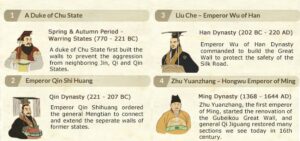
Soldiers, Common People & Criminals Built the Great Wall of China
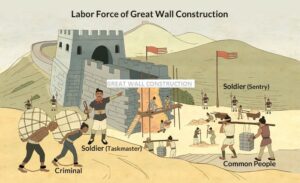
The construction was ordered by rulers of more than 20 dynasties
- Slaves, soldiers, ordinary young men, and criminals were called together to complete the work
- Several walls were being built from as early as the 7th century BC by ancient Chinese states.
- Some selective stretches were later joined together by Qin Shi Huang (220–206 BC), the first Emperor of China. Little of the Qin wall remains.
- Later on, many successive dynasties have built and maintained multiple stretches of border walls
- The most currently well-known of the walls were built by the Ming dynasty (1368–1644)
WHERE IS THE GREAT WALL OF CHINA LOCATED ?
The frontier walls built by different dynasties have multiple courses.Collectively, they stretch from
- Liaodong in the east to Lop Lake in the west
- From present-day Sino–Russian border in the north to
- Taohe River in the south
- Along an arc that roughly delineates the edge of Mongolian steppe
HOW LONG IS THE GREAT WALL OF CHINA ?
- As per an archeological survey – The total length of the entire wall with all of its branches & sections built in ALL PERIODS reaches 21196 kilometers traversing many regions of China
- Among these – those built in the Ming Dynasty (1368 – 1644) are the most commonly seen and best-preserved sites till today, stretching 8851.8 kilometers from the east to west
- A comprehensive archaeological survey, using advanced technologies, has concluded that the walls built by the Ming dynasty measure 8850 km. This is made up of
- 6259.6 km sections of actual man made artificial wall
- 359.7 km of trenches and
- 2232.5 km of natural defensive barriers such as hills and rivers
It is composed of
- 5723 beacon towers
- 7062 watching towers
- 3357 wall platforms and
- 1026 other related ruins.
The Great Wall sections in Beijing are mainly left by the Ming Dynasty
HOW HIGH / TALL IS THE GREAT WALL OF CHINA ?
- The height of the ramparts varies according to terrain
- Sections at relatively flat regions are higher than that at lofty mountains
- The average height is 6 to 7 meters with the highest point of 14 m
WHAT ARE THE ALTITUDES OF THE GREAT WALL OF CHINA ?
The altitudes of the walls vary –
- The highest point is the Huanglouyuan in the northwest suburb of Beijing, with an elevation of 1439.3 meters while
- The lowest point is at Laolongtou in Hebei, just above the sea level
HOW CAN THE GREAT WALL DEFEND SINCE THE ALTITUDE IS NOT SO HIGH ?
The fact is that the Great Wall is a complete defensive system instead of a simple wall
- First of all, there were some strongholds near the wall. Before the enemies attacked the wall, they needed to clear these strongholds
- However, the enemies usually got quite tired when they finished clearing the strongholds.
- As a result, they were easily defeated or they would go back to have a rest and get their strength back
- During this time, the soldiers on the wall would rebuild the firm defensive line
- Many sections were built along the mountain ridges
- In this case, the enemies could be stopped by these natural barriers at first
- Even if they came up, their power would be weakened a lot
- Besides, the beacon towers on the wall could give out a warning of approaching enemies, so the soldiers could get ready for the battle beforehand.
- The top of the wall is wide enough to convey the necessary materials conveniently
- The soldiers could also come to the battle fields along the wall quickly, and this enabled the army to defeat the enemies
- The Great Wall is the boundary between northern nomadic tribes and the central plain – It can control trade between them
- The nomadic people wanted to sell their goods to central plain to make profit, which could in turn strengthen their army
- However, the wall limited the economy exchange between these two groups, so that the strength of the nomadic group could be weakened to some degree
- This action may attack them at the source
WHICH SECTIONS OF THE GREAT WALL TO VISIT ?
- The top 10 parts include Badaling, Mutianyu, Jinshanling, Simatai, Juyongguan, Jiankou, Gubeikou, Shanhaiguan, Laolongtou, and Jiayuguan. Among the various sections – Badaling and Mutianyu are highly recommended
- I had visited Great Wall many times and visited a few parts
- As the most famous and best-preserved section, Badaling is a must-see for first-time visitors to China, and is highly recommended to visitors on normal days
- In constrast, the well-preserved Mutianyu is a nice choice during some big holidays to avoid crowds and are located in the outskirts of Beijing
WHAT WAS USED TO BUILD THE WALL ?
- In early times, materials varied in different regions.
- For example, constructers often used stones in mountainous areas, earth in plains, sand and weeds in deserts.
- In the Ming Dynasty, brick-making skill became mature and sections built of bricks became common
HOW MANY BRICKS WERE USED TO BUILD THE GREAT WALL ?
- There is no accurate number
- It is conservatively estimated that if using all the bricks to build a one-yard wide and 16-feet high wall, the wall is going to be as long as the equator
HOW MANY PEOPLE BUILT THE GREAT WALL ?
- The construction work was implemented intermittently by several states, involving countless labors
- The total number cannot be found in any historical material, but the recorded labors only in the Qin Dynasty (221 – 207 BC) nearly reached one million
HOW MANY PEOPLE DIED DURING THE CONSTRUCTION OF THE GREAT WALL ?
- Nearly one million people was forced to build the Great Wall
- But only tens of thousands of them survived from the heavy work and difficult conditions
- That is to say, those died from the building of the Great Wall reached almost one million
- There is no accurate number in the historical materials
- But it is estimated that the number should be no less than 1 million. This is just an estimate
- A large number of labors died because of heavy workload
- The construction work was extremely difficult
- Most of the sections were built along lofty ridges and
- Bricks used to build the wall were carried by labourers
- Many fell down from the mountains
- They worked a lot but ate a little – so some died from hunger
- Some of them may have starved to death
- Some may have died from excessive fatigue and
- Some may even have been flogged to death
IT IS OFTEN SAID THAT MANY ANCIENT PEOPLE WRE BURIED UNDER THE ROOT OF THE WALL. IS THAT TRUE ?
- According to the situation at that time, it was very likely to bury the dead bodies under or near the Great Wall
- Due to the heavy construction work, the controllers would not like to waste time to send the dead bodies away for burial
- The legend Meng Jiangnu’s Bitter Weeping is also a proof of this
- It was about a wife who cried on the Great Wall and wept the section into collapse where her husband was buried
- However, this guess has not been proved true since none of the dead bodies have been found under or near the wall yet
- Legend has that – labourers died during the construction were simply buried under the wall mainly for the following reasons
- To save funeral expenses
- To save building materials
- To deep fertilize the soil around the wall to make the roots of plants go deep to protect the foundations
- The last and the strangest, the wall was said to have the power to intimate the avenging spirits of those who died for building it
But it is just story passing by for generations. There is no historical record about it
WHAT WERE THE TOWERS ON THE GREAT WALL USED FOR ?
- There are many outstanding towers distributed along the wall, called beacon towers
- They formed the initial alarm system with each tower guarded by a squad of soldiers
- Once enemies were sited, soldiers would alarm the next tower by burning smoke in the day or raising torches at night
- Along with gunshots, the number of enemies can also be estimated
- For example, according to historical records
- One smoke column and one gunshot meant more than 100 enemies
- Two columns and two gunshots for over 500
- Three columns and three gunshots were required-more than 1000
HOW MUCH DID IT COST TO CONSTRUCT THE GREAT WALL ?
- There is no record of the total expense – There cannot be !
- However, located on steep mountains, stretching thousands of miles in distance, requiring countless materials and repairing during over 20 dynasties – all these factors make it hard to estimate how much the construction really cost
- Someone once made a rough estimation, and it cost USD $360 billion
CAN THE GREAT WALL BE SEEN FROM THE SPACE ?
It is definitely impossible to see it from the space
- The wall measures less than 6.5 meters wide on average, and is easy to be covered by the surrounding landscape
- Merely to the naked eye, it is hardly recognizable from 20 kilometers (66,000 feet) high
- It is totally invisible at a height of 60 kilometers not to mention from a space ship whose orbital altitude is on average 400 kilometers high
WHAT MAKES THE GREAT WALL A WONDER ?
WHY IS IT GREAT ?
(1) The Largest Defense Project in Human History
- It is the longest man-made construction in the world
- In the old times, it was of great military importance of preventing the enemies’ intrusion and was regarded as the ‘Guardian Angel’ of the central plain in the past
- Historically, the Great Wall of China protected its people from invasion by northern nomadic tribes and promoted trade between the two sides
Nowadays, although its military function has ended, it is the top tourist attraction in China and a symbol of the Chinese nation
- Although the construction of the Great Wall might not have completely stopped the nomadic people, it could delay the attack. It also worked well to deliver messages so that people in the Central Plains had adequate time to dispatch troops and transport supplies needed for war
(2) Great Wall’s Importance to ancient International Trade
- The Great Wall also protected traders from the invaders and promoted the import and export trade along the Silk Road
- Once the westbound caravans left the Central Plains and entered the Gobi Desert, they were highly vulnerable to attacks by nomadic people
- Along the northern Silk Road route, the Great Wall fortresses and beacon towers, protected caravans from nomadic attack
- The Silk Road brought Chinese goods and civilization to Central Asia, West Asia, Central Europe, and Southern Europe and brought back western goods and civilization along the Great Wall, promoting cultural, political, and economic communication and cooperation between China and other countries
(3) Number 1 Tourist Attraction for International Visitors
- The Great Wall has become a must-see attraction for first-time visitors to China
- The Great Wall is popular not only among common tourists but also among well-known celebrities from all over the world.
- Over 400 celebrities have visited the Great Wall, including former US Presidents Nixon, Obama, and Bush
(4) Symbol of Chinese Ethos – Unity, Diligence & Braveness
- Since the Great Wall of China was built, it has been a symbol of the unity of the Chinese nation
- Its harsh, long-lasting and large-scale construction reveals the diligence and braveness of the Chinese nation
- The Great Wall is
- Mentioned in the Chinese national anthem, and
- Appears on the first and fourth sets of RMB
This is why it is important to Chinese culture
What is the Great Wall Famous For ?
- Large scale : longest man-made in the world (21196.18 KM)
- Long history : Every dynasty preserved, from 2700 years ago
- Complete defense system : for entire China
- Grand scenery : Diverse scenery in different regions
HOW LONG DOES IT TAKE TO HIKE ALL THE WAY ACROSS THE GTEAT WALL ?
- The wall stretches more than 10 thousand miles in China
- Seldom can a person finish the whole route
- Usually, an average tourist would put one or two sections on their itinerary
However, Liu Yutian, a Chinese explorer –
- Spent two years finishing the whole journey from Shanhaiguan to Jiayuguan
- He is also the first man on the earth to complete this challenge
WHEN IS THE BEST TIME TO VISIT THE GREAT WALL
- Spring (April to May) and autumn (September to October) are the most comfortable seasons to visit this great wonder
- The temperature of that period is neither hot nor cold and the scenery is quite joyful
- In spring, the wall would be surrounded with lush green plants
- In autumn, the tree leaves always turn into red and the wall would look like a dragon swimming in a sea of fire
WHICH WORLD LEADERS HAVE VISTED THE GREAT WALL ?
The Great Wall is the most popular sight of China, receiving tens of millions of visitors annually, including many world leaders. Only the section of Badaling has accepted more than 400 leaders in total, including President Nixon, President Ronald Reagan, President George Walker Bush, President Obama, Queen Elizabeth II, President Yeltsin, President Putin, and President Mandela
WAS THE GREAT WALL SUCCESSFUL IN KEEPING OUT INVASIONS ALL THE TIME ?
- For thousands of years, the Great Wall to some extent acted like both a physical and mental barrier between the central Chinese Empire and the barbarian northern nomads, but this only worked for the underdog
- Several strong nomadic tribes in history had managed passage across the barrier
- For instance, in 13th century, the Mongols led by Genghis Khan breached the wall and subjugated north and central China for nearly 100 years
- In 1644, the Manchus’entering from Shanhaiguan resulted in the collapse of the Ming Dynasty
THE GREAT WALL IS SADLY CALLED THE LONGEST CEMETRY IN THE WORLD. IS IT TRUE ?
HAS ANY EVIDENCE OF DEAD BODIES FOUND SO FAR ?
- In 2,500 years of construction history of the massive project, more than 1,000, 000 laborers had been used, including civilians, soldiers, and convicts
- It was a special punishment for convicted criminals during the Qin (221 – 207BC) and Han (202BC – 220AD) Dynasties
- The toilsome work took many lives
- It is estimated that around 400000 builders were died and some are said to be buried in the long wall
- That gives the dreadful saying of the ‘longest cemetery’
Don’t worry! So far, there has been no actual evidence of the walls containing corpses
1/3 OF THE WALL HAS DISAPPEARED – HUGE MAN-MADE DAMAGE SINCE THE 1960s
- The Great Wall is changing all the time; to be specific – it is disappearing year by year.
- The well-maintained sections like Badaling are just a few rare exceptions
- The fact is that many wall sites had fallen into disrepair and are in danger of being lost due to physical weathering and human activities
- Human vandalism is the major threat
- According to statistics from UNESCO, nearly one third of the walls have already disappeared
- What survive today are mainly the stone and brick constructions from the Ming Dynasty. Early walls made of rammed earth, particularly those in Inner Mongolia, Gansu and Ningxia in northwest China, are deteriorating quickly, cracking, leaning or collapsing
- It is estimated that without effective conservation, these sections will disappear altogether within 30 years
- Huge Man-Made Damage since the 1960s
- During the Cultural Revolution from 1960s to 1970s, miles of the Wall were vandalized or destroyed to make way for infrastructure construction.
- Many bricks were moved to build civilian houses or farms.
- From 1980s to 1990s, some people even pillaged the bricks and sold them
- It was common to see the ramparts being reduced to give way to road or factory construction.
There was no clear regulation on the conservation of the Wall until 2006
MOST WIDE-SPREAD LEGEND – THE CRY OF MENG JIANGNU
- A tragic trivia is known to every household in China
- Once there was a woman named Meng Jiangnu, whose husband Fan Xiliang was forcibly recruited to help build the Great Wall just three days after their marriage
- Meng missed her husband so much that she decided to visit him.
- When she arrived at the building site, she was informed that Fan had died of exhaustion and been buried inside the wall
- She was heart-broken and cried day and night
- Finally, the wall collapsed and exposed her husband’s bones
SPECIAL BINDING AGENT FROM GRAIN
The building materials of the walls included the rammed earth, bricks, stones and rocks. What was the mortar ?
- It was totally different from the modern mixture of sand and cement, as it included glutinous rice flour.
- Processed rice flour served as a reliable adhesive
CAN THE GREAT WALL BE SEEN FROM SPACE ?
It is definitely impossible to see it from the space
- Measuring about 21,196 kilometers long, the Great Wall of China is no doubt the longest manmade project on the earth.
- It was once widely believed that it can be seen from the space
- Many astronauts have verified this saying and taken photos as evidence. Some medium even reported with affected seriousness, “The biggest building the astronauts could see from the space is the wall, which looks very much like a black worm.” Consequently, this statement has gone deep into people’s minds and become an honor that Chinese people enjoyed for years
Is the Great Wall truly visible from the moon ?
NO
- Yang Liwei, China’s first astronaut who was lifted into the outer space by the spacecraft Shenzhou V on Oct.15, 2003, gave a definite answer “No” to a reporter after he reached the ground
- Yang’s negative response in a practical way may probably put out a fair number of people’s passion
- But it powerfully corrected the misconception
- The wall is indeed majestic, but you won’t see it from the space !
- In fact, besides Yang Liwei, there are a lot of astronauts said the Wall could not be seen from the space
Neil Alden Armstrong – The American aviator who first set foot on the moon in 1969, was asked a thousand times whether or not he had seen the Great Wall from the moon.
- Recently from a sound recording that announced by NASA Johnson Space Center, Armstrong said that he had seen the continent, lakes and blue spots touched with red
- But he could not make out any manmade object on the earth from the moon
Buzz Aldrin
– One of the two American astronauts besides Neil Alden Armstrong that first landed on the moon, insisted that the wrong statement was from people’s misunderstanding
Jeffrey Alan Hoffman
– The former American astronaut claimed that he had not seen the Wall though much time was spent to overlook the earth including many moments skimming over China’s airspace
Dennis Anthony Tito
– the first space tourist from America who spent the space vacation in 2001, also said the Wall is invisible from the space
The Great Wall is absolutely invisible from the space
- It is narrow and irregular. In space, something irregular is hard to be observed
- Measuring about 10 meters wide on average, it is easily to be immerged from the surrounding environment
- The wall measures less than 6.5 meters wide on average, and is easy to be covered by the surrounding landscape
- Merely to the naked eye, it is hardly recognizable from 20 kilometers high
- It is totally invisible at a height of 60 kilometers not to mention from a space ship whose orbital altitude is on average 400 kilometers high
- Depended solely on the unaided eyes, it is hardly distinguished at an altitude of 65,617 feet.
- It is totally invisible at a height of 196,850 feet
- To watch the wall on the moon is equivalent to seeking for a single hair from 2,688 meters away
To say an astronaut can see the it from space is obviously not true
- To add, some people introduced an idea to make the Great Wall visible from the space.
- If we install bright spotlights on the wall, no matter they are big or small, astronauts can see the lights at night.
- There
fore, some believe that the wall can be showed up from the surrounding environment as long as the angle of the sunlight is appropriate. - But this suggestion has not been carried out by scientific experiment
In conclusion, it is generally accepted that the wall cannot be seen from the space
IS THE GREAT WALL VISIBLE FROM LOW EARTH ORBIT ?

-
A satellite image of a section of the Great Wall in northern Shanxi, running diagonally from lower left to upper right and not to be confused with the more prominent river running from upper left to lower right
-
The region pictured is 12 km × 12 km (7 mi × 7 mi)
-
A more controversial question is whether the Wall is visible from low Earth orbit (an altitude of as little as 160 km (100 mi))
-
NASA claims that it is barely visible, and only under nearly perfect conditions – it is no more conspicuous than many other man-made objects
-
Veteran U.S. astronaut Gene Cernan has stated: “At Earth orbit of 100 to 200 miles [160 to 320 km] high, the Great Wall of China is, indeed, visible to the naked eye.” Ed Lu, Expedition 7 Science Officer aboard the International Space Station, adds that, “it’s less visible than a lot of other objects. And you have to know where to look.”
-
In October 2003, Chinese astronaut Yang Liwei stated that he had not been able to see the Great Wall of China
-
In response, the European Space Agency (ESA) issued a press release reporting that from an orbit between 160 and 320 km (100 and 200 mi), the Great Wall is visible to the naked eye
-
Leroy Chiao, a Chinese-American astronaut, took a photograph from the International Space Station that shows the wall
-
It was so indistinct that the photographer was not certain he had actually captured it
-
Based on the photograph, the China Daily later reported that the Great Wall can be seen from ‘space’ with the naked eye, under favorable viewing conditions, if one knows exactly where to look
HOW WAS THE GREAT WALL OF CHINA CONSTRUCTED ?
- Select the sites to construct the Great Wall of China
- Get construction materials locally or transport them to the construction sites
- Construct the wall with different methods in different sites and time periods
HOW WREE THE CONSTRUCTION LOCATIONS OF FREAT WALL SELECTED ?
The construction of the Great Wall lasted more than 2500 years and the construction locations varied in different states and dynasties due to the different military situations and topographies
- Generally,the Great Wall was built alongside the boundary lines
- Between different states or
- between agricultural and nomadic civilization to protect the people and their terrain from invasions
- In order to resist the invasions of those nomadic nations whose cavalries were quite strong, the constructors also took advantages of topographies
- Many parts of the Great Wall were built along a mountain ridge, for the sheer mountain ridge could add more defensive value to the wall
- Besides, when the wall reached the most danger-ridden cliffs, the builders would stop building the wall and take the cliffs as a natural barrier
- This design can be found in many sections such as Simatai and it is called by experts “the mountain-supported wall”
- Besides, on the sites which were easier to be captured or frequently attacked like valleys, rivers transition spots or the strongholds on the plain, passes with stronger defensive abilities were generally built
- In this case, it could reach the effect that “even if one man guards the pass, ten thousand enemies are unable to get through”.
- Moreover, the watchtowers and beacon towers were usually built on the high spots to observe the enemy and send the alert massages more easily and clearly
HOW WAS THE GREAT WALL OF CHINA CONSTRUCTED ?
- The Great Wall was originally developed from the city wall
- The people primarily used wooden handrails, muddy walls and stone walls to protect themselves
- They usually took advantage of nature and dug the ditches, piled earth, planted trees, as well as cut through the hills to form a defensive line
- With the development of construction skills, the construction methods of the Great Wall became more and more mature, so the defensive system were more complete than before
- In addition to the walls, necessary parts like fortresses, watch towers, passes were also added along the wall.
- In the construction process, the workers mainly obtained the materials locally to reduce the workload
- For example, the workers usually built the sections on desert by paving a layer of sand and small stone mixtures, and adding a layer of reeds and red willows. Finally, the walls were built layer by layer
- They also built the sections along the mountain ridge by piling up the local stones. In addition, there were some materials like sticky rice and bricks conveyed from other places to reinforce the walls.
- Due to the entire massive construction project was impossible to control by one person, it was divided into different sections which were managed by different generals
- In the Qin Dynasty (221 – 207 BC), the government set twelve counties along the boundary line to build walls in different areas. The following dynasties also continued to use the same method to finish the entire project
- The famous General Qi Jiguang of Ming Dynasty (1368 – 1644AD) was once in charge of the construction work near Beijing
How materials were delivered to the construction sites ?
In order to save efforts, the workers obtained raw materials as locally as possible, but there still were some materials delivered from other places. The workers usually conveyed the materials in the following ways.
Transport by manpower : This was the most primitive way to convey the materials to the construction site
- The workers usually shouldered the bricks and stones or carried the materials with baskets or sticks to the mountain
- Apart from these methods, they also queued along the mountains and passed the baskets with stones one by one, which improved transport efficiency a lot
- In winter, they splashed water to the ground and after an icy road was formed, they could push or pull the huge building stones easily
Transport by some simple machines and tools
- The workers had already learned to use some simple machines and tools to deliver the materials
- They transported the stones by wheelbarrows when the construction sites were on the relatively flat ground
- They also used a rolling log and crowbar to convey the huge stone to the mountain
- Moreover, if they needed to transfer the materials through a valley, they would tie a rope across the valley and slide the basket from one side to the other side.
Transport by animals
- It is said that goats and donkeys were used to deliver the stones and bricks when the workers built the Badaling Great Wall
- There was a legend that the workers tied up the bricks on the horns of the goat and put the baskets with stones on the back of the donkey, and then they tempted and moved these animals to take these items to the mountain
